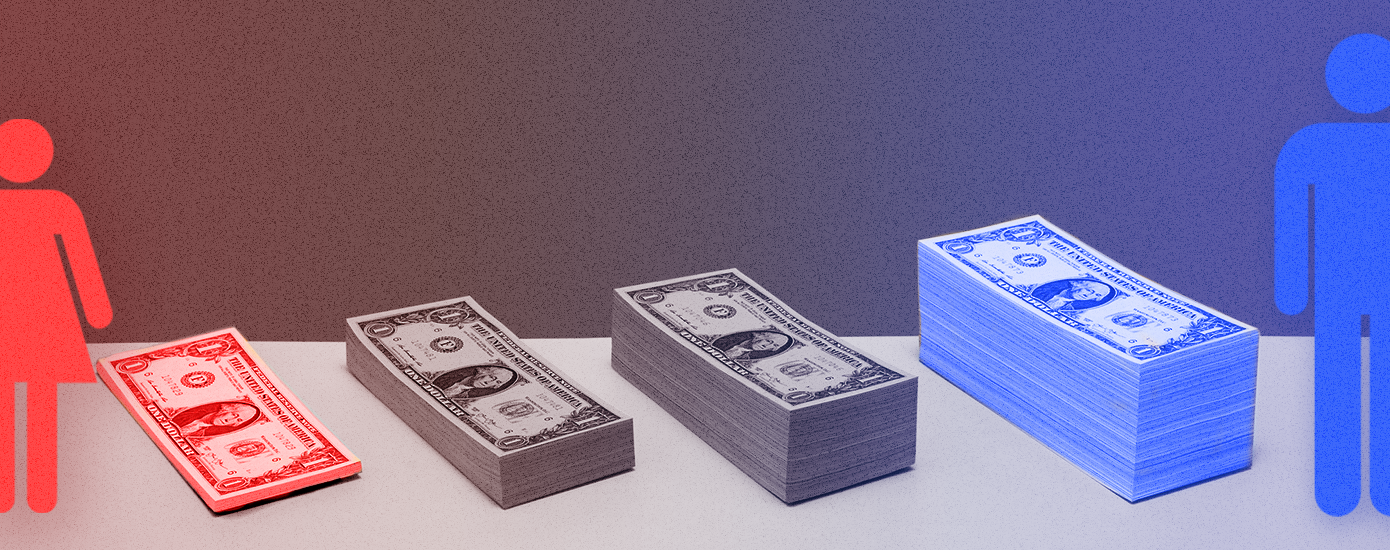
What Is the Gender Wealth Gap and Why Does it Matter?
The gender pay gap — that oft-cited statistic that women make around 80 cents for every dollar earned by a man — gets a lot of airtime. But what happens when you take that gap, compound it over a lifetime, stir in discriminatory policies, and stretch it out over generations?
The result is the gender wealth gap, which starts almost as soon as women enter the workforce (consider that women shoulder two-thirds of the $1.5 trillion in outstanding student loan debt). It trails them all the way through retirement, when they leave the labor market with fewer savings and lower Social Security payments.
At its most basic, your wealth is the total value of your assets (for example, a home, retirement, or savings accounts), minus your liabilities (such as a mortgage, credit card obligations, or student debt), or “what you own minus what you owe.”
Women, at nearly all stages of their lives, tend on average to have less wealth than men, a gap that is further widened for women of color.

Using data on millennial women collected between 2010 and 2015, single millennial men had 162 percent of the average wealth of their female millennial counterparts, or $11,230 to women’s $6,914 (adjusted to 2016 dollars), according to an analysis by Jhumpa Bhattacharya, vice president of programs and strategy at the Oakland-based Insight Center for Community Economic Development. (She defines “millennial” as those born between 1980 and 1997.) Single white millennial men had nearly six times as much wealth as single Black millennial women, $15,377 to $2,683.
One key driver is student debt. On an individual basis, millennial women have nearly $5,000 more in student debt than their male peers, owing an average of $20,263, compared to $16,271, according to Bhattacharya.
“Women are more likely to attend college than men, and especially women of color, and this is a wonderful thing,” said Mariko Chang, author of Shortchanged: Why Women Have Less Wealth and What Can Be Done About It, referring to the decades-long trend of women outpacing men in college enrollment. “But at the same time, it also tends to put people in debt, and the cost of higher education has grown astronomically over the past decade or two, so that now people are graduating with much greater debt than they used to.”

As women become parents, wealth-building becomes even harder. For those who try to combine work and parenting, childcare costs “end up being this wealth-stripping mechanism that just sucks wages and prevents wealth-building,” said Andrea Flynn, a fellow at the left-leaning Roosevelt Institute who has written extensively on gender and racial wealth gaps.
Combine that with lower average pay than men, which the National Women’s Law Center estimates will cost women an estimated $418,800 over a lifetime, and missed Social Security contributions from time out of the workforce, and women are 38 percent more likely to face poverty during retirement.
Saving more and having more financial literacy could help, but those individual behavioral changes ignore the structural and policy factors that keep so many women from attaining even basic economic security. Flynn cites universal childcare and family leave as her top policy priorities to close the gap, as well as an end to the fines and fees levied by the criminal justice system on people charged with wrongdoing. In many states, she also noted, welfare regimes cut recipients off if they amass a certain amount of assets, which makes it harder for them to break out of the poverty cycle.
“In order to get welfare you have to work, but you can’t get welfare if you have assets over a certain value, so it’s basically just keeping women, if not in poverty then certainly out of wealth,” said Flynn.

Kay Hymowitz, the William E. Simon Fellow at the right-leaning Manhattan Institute, isn’t convinced that the types of policies Flynn proposed would close the gap.
“The assumption that child care, parental leaves and all those ways of doing things would solve the gender wage gap or wealth gap loses any of its power when you look at the fact that there is still a wage gap, a considerable wage gap, in countries that have those things, and I assume a wealth gap as well,” she said, adding that she had not researched the wealth gap per se.
“There’s always this fantasy that the only problem is there’s not enough help from the state to absorb some of the tensions in women’s lives...but that just hasn’t been borne out where those policies have been tried,” she said, citing Sweden, where this is a smaller wage gap than in the U.S. but a wage gap nonetheless.

